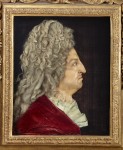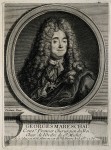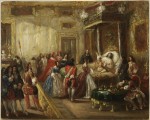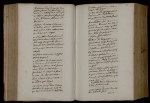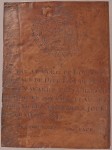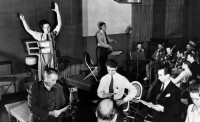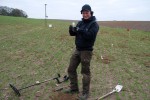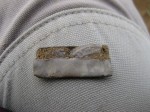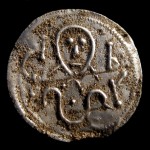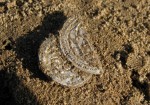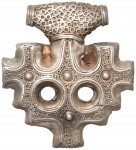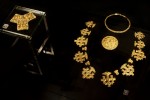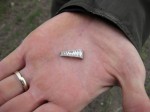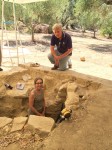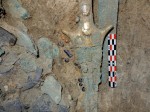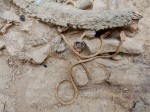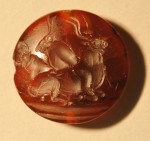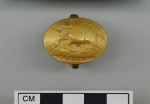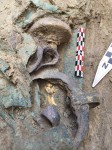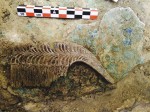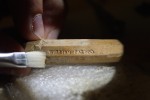 Archaeologists at Historic Jamestown have discovered the tenth Virginia-made pipe with a name inscribed on the stem. It’s the first new named pipe found at the site since 2009, and in contrast to most of the earlier discoveries, the name is complete: William Faldo.
Archaeologists at Historic Jamestown have discovered the tenth Virginia-made pipe with a name inscribed on the stem. It’s the first new named pipe found at the site since 2009, and in contrast to most of the earlier discoveries, the name is complete: William Faldo.
The stockholders of the Virginia Company were expecting to make a quick profit from their investment in the Jamestown settlement, but the struggling colonists could barely keep themselves alive, never mind send back the riches in minerals and trade goods the company had envisioned. They weren’t even self-sufficient, having clashed with the Powhatan tribes weeks after their arrival and being saddled with a surfeit of soft-handed gentlemen rather than farmers and laborers who could have been of practical use.
In January of 1608, eight months after the founding of Jamestown, the Virginia Company sent a supply mission that was woefully short of necessary provisions but long on new colonists. At least this time there were more laborers and tradesmen than gentlemen on board. Pipemaker Robert Cotton was one of them.
![]() Tobacco was introduced to Europe by the Spanish in the 16th century but it was Sir Walter Raleigh who popularized it in England after Ralph Lane, first governor of Virginia, gave him a long-stemmed pipe and Virginia tobacco in 1586. By the time John Rolfe, future husband of Pocahontas, planted Virginia’s first commercial tobacco crop in Jamestown in 1612, smoking was widespread in England. Rolfe’s first crop was sold in London in 1614. Five years later, Jamestown was exporting 10 tons of tobacco to England a year. By 1639 it was 750 tons.
Tobacco was introduced to Europe by the Spanish in the 16th century but it was Sir Walter Raleigh who popularized it in England after Ralph Lane, first governor of Virginia, gave him a long-stemmed pipe and Virginia tobacco in 1586. By the time John Rolfe, future husband of Pocahontas, planted Virginia’s first commercial tobacco crop in Jamestown in 1612, smoking was widespread in England. Rolfe’s first crop was sold in London in 1614. Five years later, Jamestown was exporting 10 tons of tobacco to England a year. By 1639 it was 750 tons.
When Robert Cotton first arrived at Jamestown, there was no tobacco cash crop. His brief was to seek out new sources of clay and pipe production methods that would give the Virginia Company consumer goods they could actually make some money selling in England. The London pipemaking industry was supplied exclusively by Dorset white clay. If Virginia clay could supply a colonial pipemaking enterprise, the Virginia Company could break the Dorset monopoly.
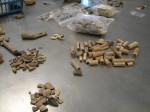 While there are no surviving documents mentioning Robert Cotton other than the passenger list of the First Supply mission, archaeological evidence of his work has survived. Since 2006, archaeologists have unearthed more than 1,550 fragments of pipes made by Robert Cotton. They were found in a well, probably discards that failed during the manufacturing process. Cotton combined the tulip-shaped bowl of Virginia Indian pipes with English technology and decorative elements to create a unique design not found in any other early Virginia colonies. The Virginia clay wasn’t the pristine white of Dorset’s or fired at the same high heat, but Cotton’s handmade work (he did not use molds to make these pipes) was appealing and saleable.
While there are no surviving documents mentioning Robert Cotton other than the passenger list of the First Supply mission, archaeological evidence of his work has survived. Since 2006, archaeologists have unearthed more than 1,550 fragments of pipes made by Robert Cotton. They were found in a well, probably discards that failed during the manufacturing process. Cotton combined the tulip-shaped bowl of Virginia Indian pipes with English technology and decorative elements to create a unique design not found in any other early Virginia colonies. The Virginia clay wasn’t the pristine white of Dorset’s or fired at the same high heat, but Cotton’s handmade work (he did not use molds to make these pipes) was appealing and saleable.
Many were stamped with a diamond shape maker’s mark and fleurs-de-lis. A few of them were inscribed with the names of influential people stamped into the clay with printer’s type. Nine pipes were found with names or enough of a name to be identifiable, all of them officials of the Virginia Company or high-powered courtiers: Sir Charles Howard, lord high admiral of the English Navy, famed explorer and smoking trend-setter Sir Walter Raleigh, the Earl of Southampton, Virginia Company official and patron of Shakespeare whose name appears on two pipes, Lord De La Warr, owner of a huge quantity of Virginia Company stock and first resident governor of Virginia, Captain Samuel Argall, ship’s captain and lieutenant governor of Virginia, Captain Francis Nelson, ship’s captain of the Second Supply mission, Sir Walter Cope, antiquarian and Virginia Company official, Robert Cecil, Lord Salisbury, Virginia Company investor and King James’ secretary of state.
![]() It’s unlikely these luminaries commissioned a Virginia pipe. Archaeologists believe the name stamping was a marketing device, a gift for investors to assuage their concerns attending Jamestown’s financial prospects. William Faldo, however, was not so illustrious a personage. He may have gotten his own named pipe because he was friends with the maker. His pipe was also found in a different location, a cellar rather than a well.
It’s unlikely these luminaries commissioned a Virginia pipe. Archaeologists believe the name stamping was a marketing device, a gift for investors to assuage their concerns attending Jamestown’s financial prospects. William Faldo, however, was not so illustrious a personage. He may have gotten his own named pipe because he was friends with the maker. His pipe was also found in a different location, a cellar rather than a well.
Faldo was a Swiss German member of the Society of Mines Royal who persuaded the Virginia Company that he could find silver mines in the colony. He arrived along with a group of German and Polish craftsmen in October of 1608 and quickly set out to find the mines. He was believed to have found a silver mine upstream of the falls of the James River, but before thoroughly exploring it he went back to England to secure an exclusive contract to work the mine. He returned with Governor De La Warr in 1610 after the Starving Time had driven the few survivors to abandon the Jamestown fort. De La Warr was very keen on securing that silver, so he ordered the settlers to stay put and rebuild Jamestown. The silver was never found and Faldo was killed by Appomattox Indians that same year.
[youtube=https://youtu.be/x6iNbq8db1w&w=430]

